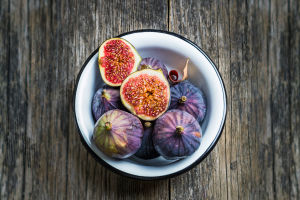Tulips are one of the most popular and beloved flowers in the world. These colorful and elegant blooms have captured the hearts of gardeners and flower enthusiasts for centuries.
With their bright and bold hues, distinctive shapes, and delicate petals, tulips symbolize beauty and grace.
Tulips are a lily family member and native to central Asia. The first tulips were cultivated by the Turks in the 11th century, and they quickly became a popular ornamental flower in the Ottoman Empire. In the 16th century, tulips were introduced to Western Europe, where they became a status symbol among the wealthy and aristocratic classes.
Tulips were so prized that they became the subject of speculative trading, leading to the infamous "tulip mania" bubble in the Netherlands in the 17th century.
Today, tulips are grown all over the world, from Holland to the United States, and are available in a wide range of colors and varieties. They are a popular choice for gardens, parks, and landscaping, and are often used as cut flowers in floral arrangements.
One of the most distinctive features of tulips is their bulbous shape, which gives them a unique and recognizable silhouette. Tulips come in many different shapes and sizes, from the classic cup-shaped blooms to the more exotic parrot tulips, which have ruffled petals that resemble feathers. The petals of tulips can also vary in texture, from smooth and silky to velvety and matte.
Tulips are available in a wide range of colors, including red, yellow, pink, purple, and white. Some tulips even have multicolored petals, with stripes or speckles of different hues. Tulips can be solid-colored, bi-colored, or even tri-colored, with different hues blending in intricate patterns.
Tulips are a popular choice for gardens and landscaping because they are easy to grow and care for. They prefer well-drained soil and full sun and should be planted in the fall for optimal growth. Tulips are also relatively pest-resistant, making them a low-maintenance choice for gardens and landscapes.
One of the most fascinating things about tulips is their ability to change color over time. As the flowers mature, their colors can become more intense or fade away entirely, depending on the variety. Some tulips also change color depending on the temperature or amount of sunlight they receive. This ability to change color makes tulips an endlessly interesting and dynamic flower to observe and enjoy.
Tulips also have a rich cultural and symbolic history. In many cultures, tulips are seen as a symbol of love, beauty, and perfection. In the Netherlands, tulips have become a national symbol and are celebrated during the annual Tulip Festival. Tulips have also been used in literature and art throughout history, from the paintings of the Dutch Masters to the poetry of Emily Dickinson.
Despite their beauty and popularity, tulips are not without their challenges. One of the biggest issues facing tulips today is disease, particularly tulip fire and tulip virus. These diseases can cause significant damage to tulip plants, leading to stunted growth and distorted blooms.
To protect tulips from disease, gardeners must take care to plant disease-resistant varieties and practice good garden hygiene.
Tulips are a beloved and iconic flower that have captured the hearts of people all over the world. With their distinctive shape, bright colors, and rich history, tulips are a true symbol of beauty and grace. Whether grown in gardens or used in floral arrangements, tulips are sure to add a touch of elegance and charm to any setting.


